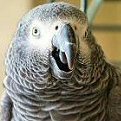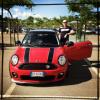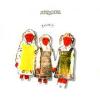-
Posts
63 -
Joined
-
Last visited
Contact Methods
-
Website URL
www.AOAdecals.com
Profile Information
-
Gender
Male
-
Location
NC USA
Recent Profile Visitors
639 profile views
ziggyfoos's Achievements

New Member (2/9)
42
Reputation
-
Late to the discussion, but to try to address your questions you asked about the A-4 in particular: 4. Any details on where photo was taken and date - Chu Lai Vietnam perhaps? Yes Chu Lai, probably around 1966. 5. Anyone have any photos of port side of the aircraft? I've not seen any unfortunately. 6. Nose art " Supercat" would that also be on port side of nose? Very highly likely. The squadron CO's marked WL-1 "Topcat" had its name on both sides. For "Supercat" WL-00 the MAG CO's name would've also been painted on the left side, similar to the plane captain's name seen in the pic. 7. Squadron crest on intake looks atypical not the usual Tomcatters crest. It was more typical during short period in 1966 into maybe early 67. 5. Any decals of this particular Scooter in 1/72? It would make a cracking subject! Not that I know.
-
They didn't necessarily stay "new" too long. By even early 70s, F-4J's could've already gone through depot. For 155800, depends what time period you're covering. The 1972 version of 155800 wouldn't have the full original McD factory data stencils by that time. The two b/w pics posted earlier show different periods and the data/stencils between the two pics aren't the same. Notice the locations, quantity, and BuNo/Type style, ejection warnings, rescue, etc are all different. The pic taken on the ground (1969) is when it still carried the original full McD manufacturer stencil/panel markings (the type provided by Fundekals) - these would be gone after first repaint. The inflight pic (1972) has far fewer stenciling and presumably has gone through a repaint by then, I'd suspect it has some form of open letter stencil (USN had variations) but not complete application of everything.
-

1/48 - Cessna O-2A Skymaster by ICM - released
ziggyfoos replied to Homebee's topic in The Rumourmonger
The enlarged left hand side window, it extended further up the side to the roof. Can see it in the boxart image well. Don't have my refs handy but as I recall it started with around 1968ish production. -

1/48 A-6A Intruder, VA-75 'Sunday Punchers.' Finished 13/11.
ziggyfoos replied to DaveJL's topic in Vietnam GB
Dave excellent progress so far. If it matters, the wing, tail, and pylon leading edges on early A-6s (like many other USN aircraft in that period) were Corogard, an aluminum grey color. The tan/brown tape on the leading edges came about later (70/80s). Here's a detail pic from their 1965 Indy cruise that you're doing: -
The AOA sheet for Vietnam War O-2s has been released: http://www.aoadecals.com/48017
-
As mentioned, the spinners were optional on the B. Here's two similar views of the speaker assembly on 21458 in Vietnam (no spinners on this aircraft and no fuselage national insignia either): Other than the later O-2As that had the enlarged windows to my knowledge the B's had the same port window as the original/early As. Both 1/48 ICM and 1/32 Roden kits have the early small portside window.
-

1/48 - Cessna O-2A Skymaster by ICM - released
ziggyfoos replied to Homebee's topic in The Rumourmonger
Ya, that's been the plan since the announcement of this kit earlier this year. I'm waiting for the kit itself first before the decal work. -

1/48 - Cessna O-2A Skymaster by ICM - released
ziggyfoos replied to Homebee's topic in The Rumourmonger
Great news, and already more than one boxing planned from the start. I was expecting Roden to get it done in 1/48 after their release of the 1/32 kit, similar to what they did with the O-1. Will be curious what ICM plans are for the left side window for the O-2A; original small window only (like Roden) and/or later enlarged window option? I really hope it's the small if they do only one but having that second window option opens up even more OOB options for markings. The AOA decals 1/32 sheet for Vietnam O-2s will be redone for this 1/48 kit with at least one scheme swapped out for another. -

1/48 - Cessna O-2A Skymaster by ICM - released
ziggyfoos replied to Homebee's topic in The Rumourmonger
In addition to the window configuartion, the vertical tail joint to the booms looks to be another obvious difference, with those being much more faired in compared to the O-2. -
Even though officially it was 30deg there were still plenty of angle variations (and ratios) since the numbers/letters could've been applied at squadron level using simple masking tape (by eye) or locally made stencils.
-
Even USMC F-4Js in Thailand were flying air to air loads in 1972 (typically three fuel tanks, two AIM-7s, and four AIM-9s).
-
From what I can tell they're on airframes that have gone through a rework facility after already being in service previously with their original new McD factory data (that is the type Zotz did in 1/32 and Furball in 1/48). I hope it was/is clear that the painted on stencil type in this latest release will not be appropriate for every F-4 scheme, just like the McD type previously mentioned from Zotz/Furball wouldn't either (those only be appropriate for new airframes from the factory). Then others, like the VF-143 examples earlier in the thread, have a different type. The famous "check references". That Red Devils sheet has an early F-4J from 1969 as one option but that one would've still had the original McD airframe data; but come 1972, the Lancer's "old" F-4J for example had the open stencil type data (also WD-14 did too for those with the old Fox One sheet). The stencil type was definitely in use by at least as early as 1966 on F-4Bs, there's probably earlier examples but here is clear one from late 1966 or early 1967:
-
To clarify the "who are selling their own decals for this so take from that what you will" comment, it's a fact that s/n 67-21452 was an O-2B and isn't an opinion or marketing ploy to sell decal sheets. As mentioned, The Don't Shoot one with the many Snoopy markings is a modern warbird/museum scheme. The airframe itself was in Vietnam, but not in those modern fanciful markings. Similarly, the fancy marked black one is also a modern warbird marked aircraft and again is not at all accurate markings for a Vietnam O-2: https://www.britmodeller.com/forums/applications/core/interface/imageproxy/imageproxy.php?img=http://imgproc.airliners.net/photos/airliners/8/5/0/1832058.jpg?v=v40&key=74b517c5a24f1bfa0d30e489f9ee1387e10cb59643902c44b01b5ee7782b73dc
-
Well I changed my mind as usual, but was right in saying it was a lot of work. Over the holiday break I finished a new sheet specifically covering the painted on stencil type data I mentioned in that Nov post, will be new AOA sheet #32031. Website isn't updated yet but images are posted on the Facebook page (no FB account required to view)
-
I had seen similar statements too regarding at least VMFA-212, their history mentions: "The Lancers received four lead-nosed Phantoms from VMFA-334 at El Toro in May 1968. Radar-equipped Phantoms were fully implemented by November 1969." Their aircraft at that timeframe all appeared to be in the low 1538xx (ad) block.








